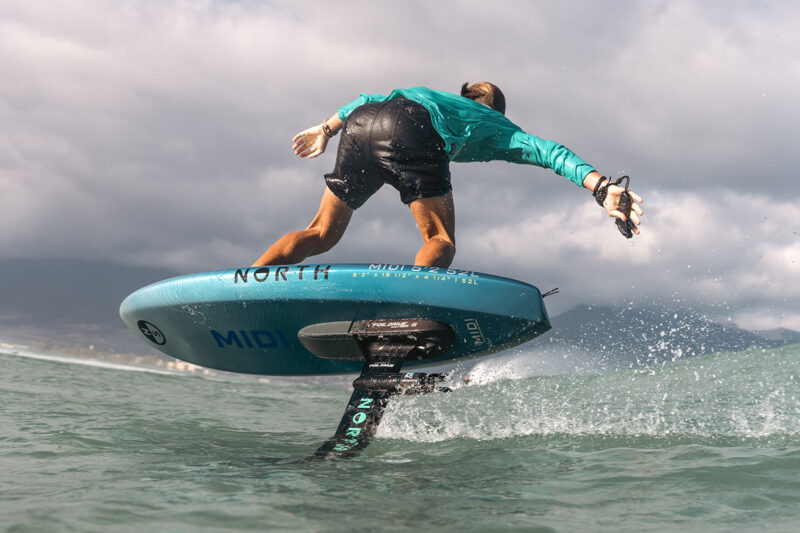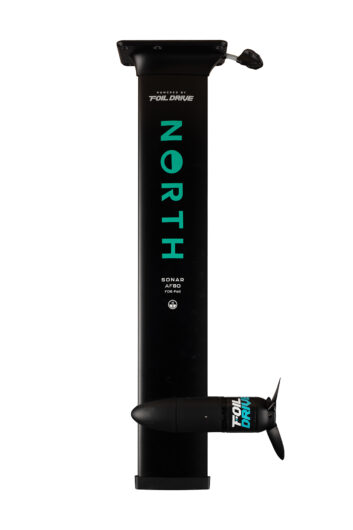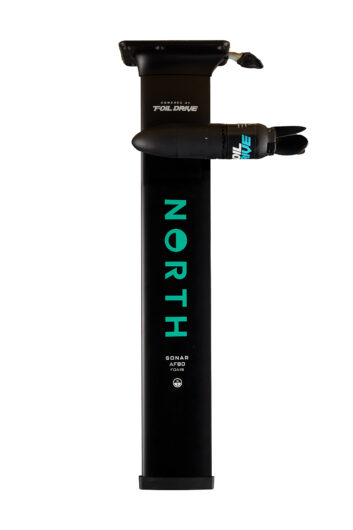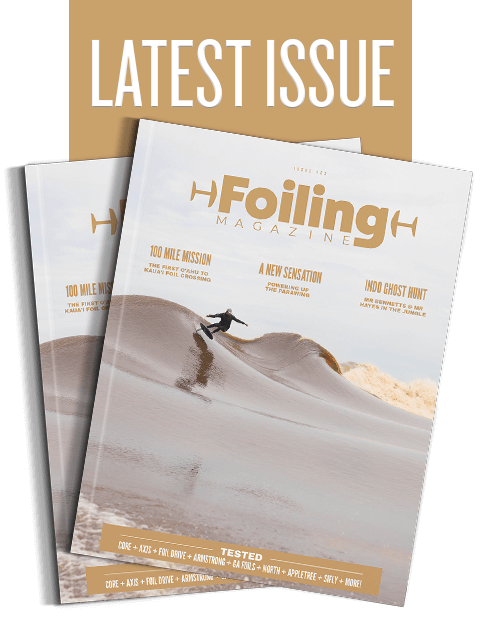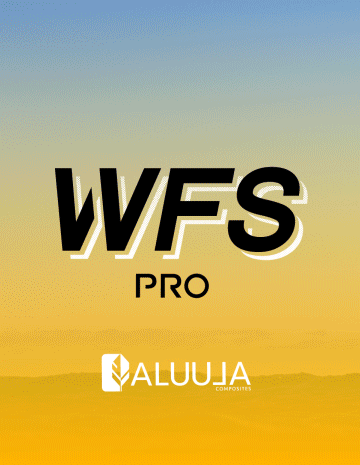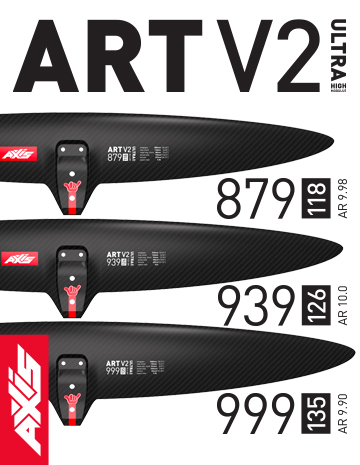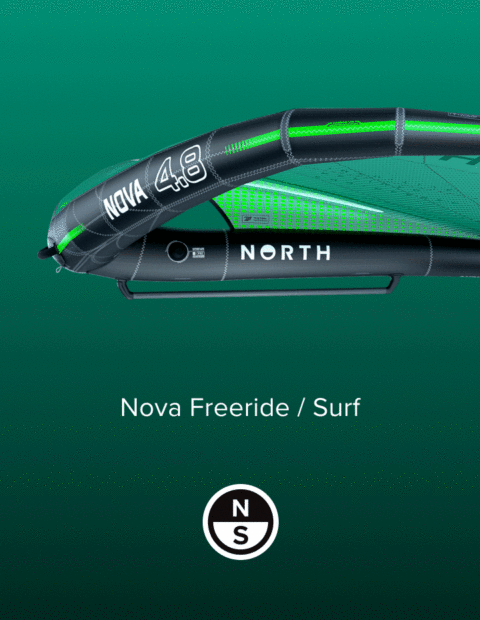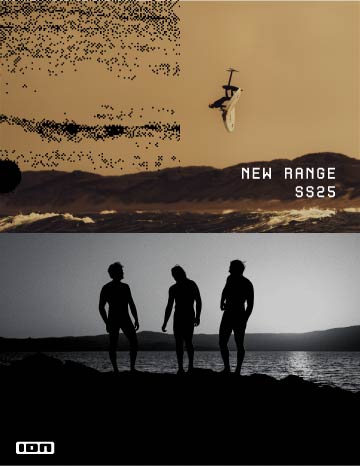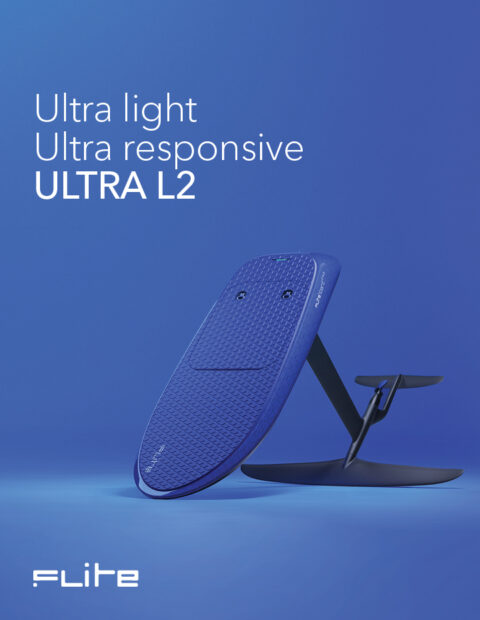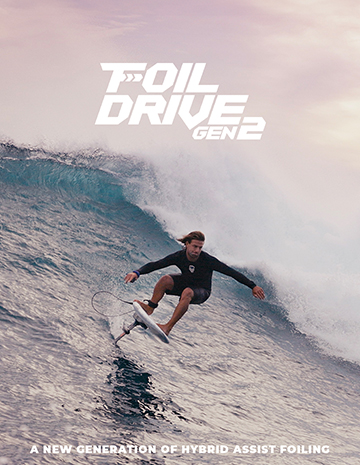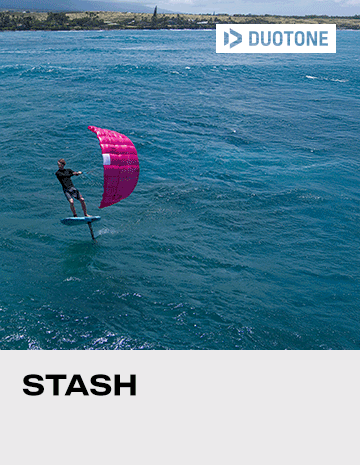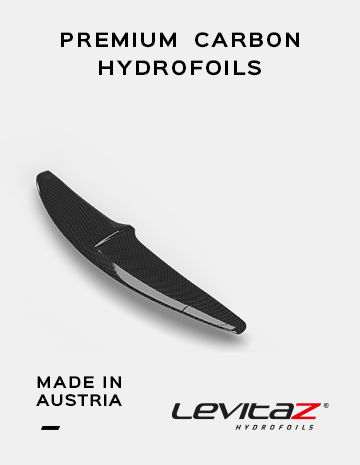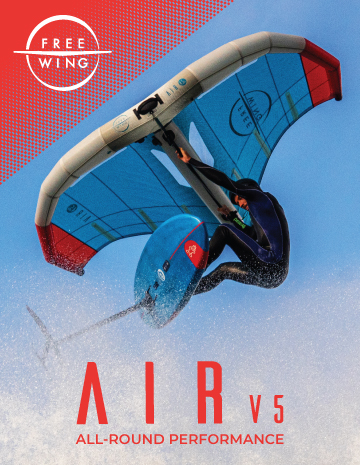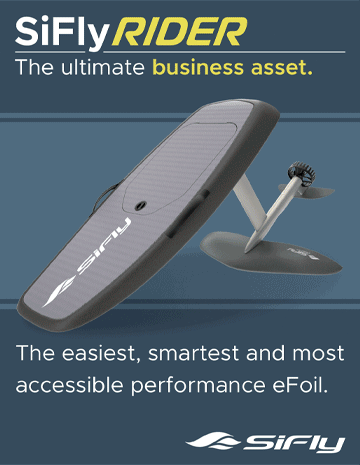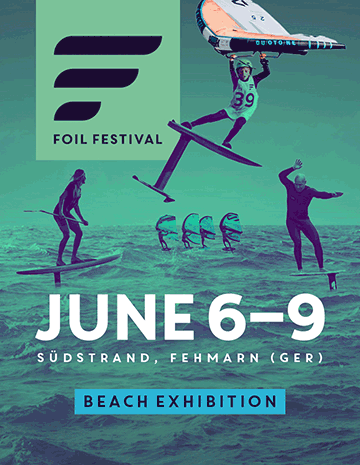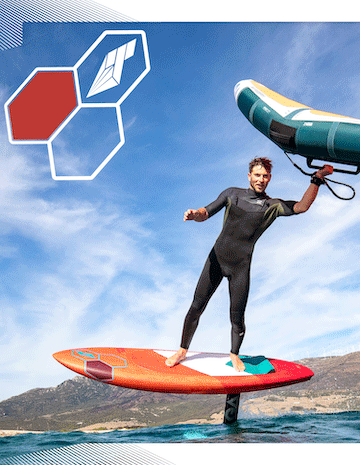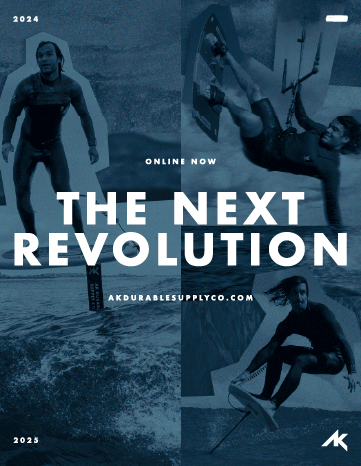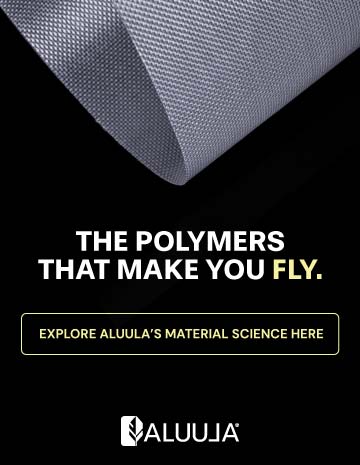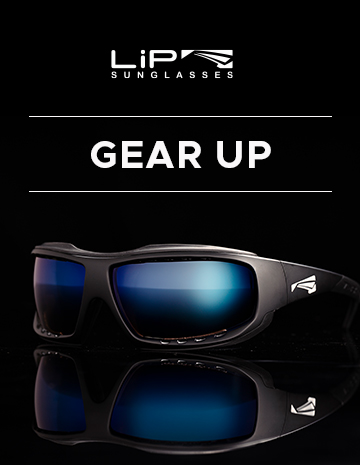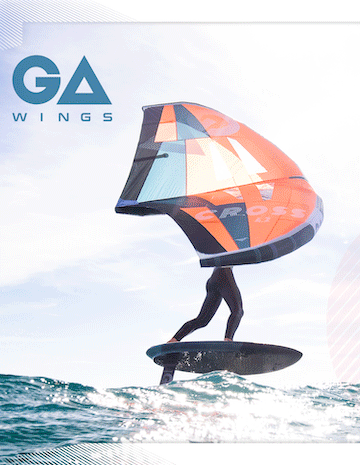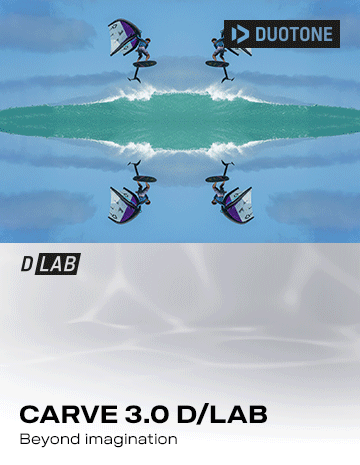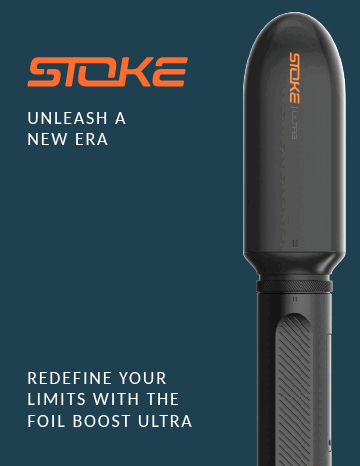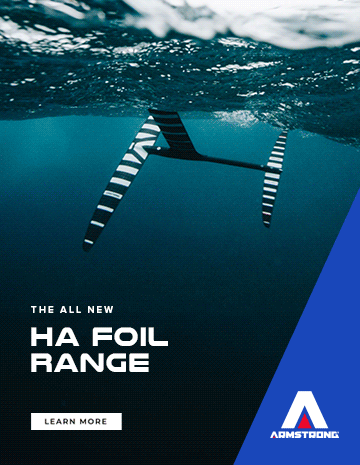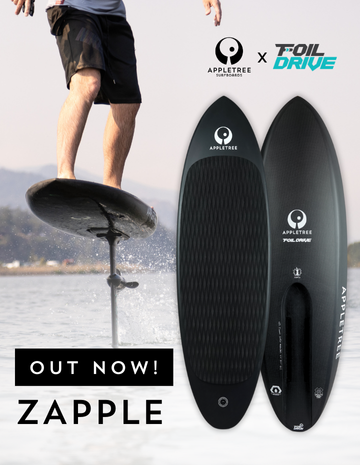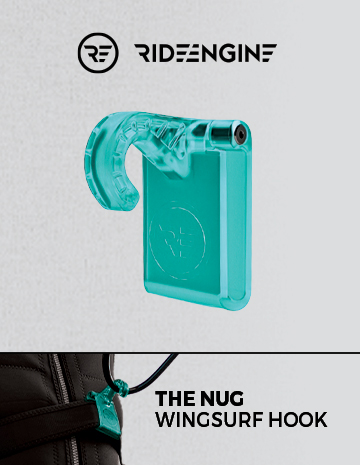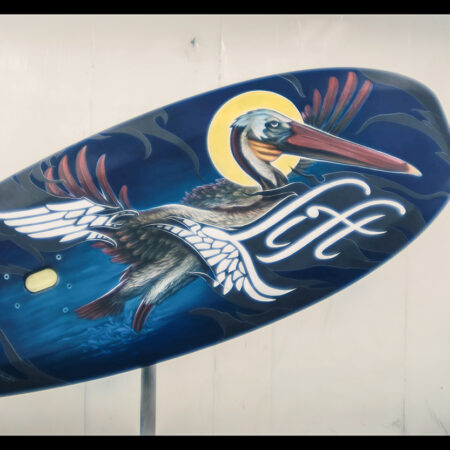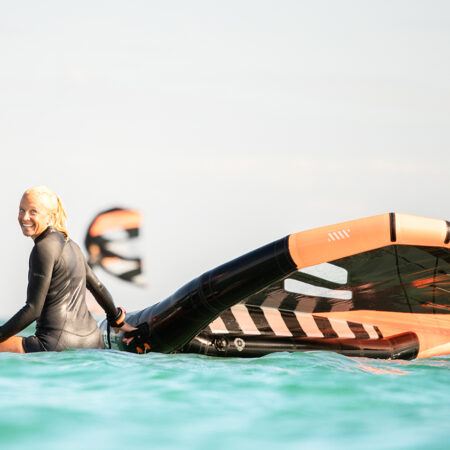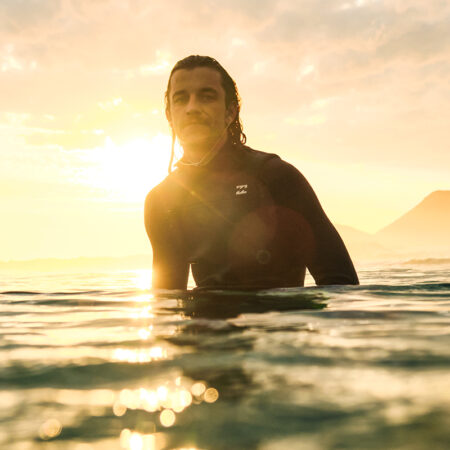Inbound: North Sonar Integrated Foil Assist Mast
So not only do we have a Foil Drive compliant board in this issue, but here we also have a brand new collaborative Foil Drive compliant mast. We looked to the North crew for some intel, and got no less than three of them, including North Foils’ Product Development Manager Uli Sommerlatt, North’s Brand Director Mike Raper, and North’s Head of Marketing, Maurits Haantjens.
So guys, please tell us first what are the clear benefits from an integrated system, over buying a Foil Drive unit separately?
Uli: There are multiple benefits to an integrated system. For example, there’s a massive 15% reduction in drag from the mast, creating extended battery life and ride time. The trailing edge thickness is approximately 0.5-1.0mm. When taping a 9mm cable along the trailing edge, this will massively reduce the efficiency of the foils system. With an integrated mast you keep the impact of the foil assist to a minimum and gain approximately 15% in additional battery life due to the reduction of drag compared to a mast with a thick cable taped to the trailing edge which is a bit like watching a plane land, when it pushes out the air brake on the wing flaps upon landing, and makes the trailing edge of the wing thick to increase the drag.
Mike: When you are already investing so much on a foil assist system like this, why not upgrade to a dedicated mast that is the best it can be. The benefit is that you can leave the mast system complete in your truck and have it set up full time. Life is too short and who has that kind of time to waste? The North integrated mast allows you to get out quickly and stay out longer due to the increased efficiency.
Can you let us in on how this collaboration first came to be?
Uli: We had been watching the development of Foil Drive systems from the sidelines for the past few years. When they brought out the Gen2, we saw the full potential of electric drive assisted hydrofoiling and immediately knew this is a direction of the sport that we wanted to chase and develop further.
Mike: Yeah, we could always see the potential to access breaks that we had only previously been able to reach by jet ski and a tow partner. After the release of the Gen2, we invited Paul to come stay and ride with us in New Zealand, this gave us the opportunity to hang with Paul and go through the subtle nuances of the system and brainstorm the future possibilities of a collab. Yes, we did have a few late night beers, and a lot of fun adventures.
Tell us about the benefits that each rider can glean from the various different mast set-ups…
Maurits: Having the Integrated Foil Assist Mast positioned at 15/20cm will help you log more hours on the foil, and therefore, you’ll be able to progress your skills quicker, ride more days, get more waves, and get off and back to the shore safely, with no jet ski or tow buddy needed. Having it set up as the E-Foil Integrated Mast means you can learn to foil without a boat or a wing, and you can just cruise around.
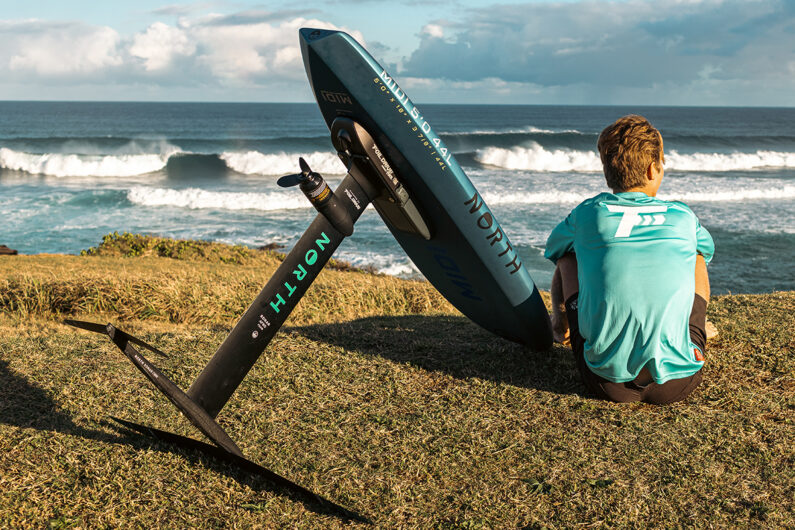
How difficult was it to engineer the cable through the mast without compromising flex stiffness?
Uli: On the aluminum AF80 FDA15, AF80 FDA20 and AF80 FD E-Foil it was not difficult at all – the masts are weight optimised with extrusion profiles, so there are hollow cavities in each mast that the cable can run through.
We also have a fully instigated Ultra High Modulus Carbon Mast UHM80FDA18 that is coming out in mid 2025. The pod sits 18cm from the mast base plate, so at that height the cross section can easily accommodate the cable duct. The internal cables do not influence the mast design by any means. That is purely driven by the hydrodynamic attributes that we look for. If you are after stiffness and lightweight combined with a significant reduction in drag due to a pod that is hydrodynamically optimised and fully integrated in the 3D mast shape, then you are definitely in the market for the UHM80FDA18 mast.
Mike: That mast is going to be insane, the drag is so much less, you can hardly feel the pod touching the water, the efficiency is next level. This will allow the more advanced riders to really push the boundaries of what we think is possible for the foil assist category.
Where do you see the assist market heading in the next two years?
Maurits: Foil Assist is currently positioned at the second stage of the technology adoption curve, predominantly used by innovators and early adopters. However, within the next two years, I anticipate the early majority will begin to embrace Foil Assist. This shift will occur as more foilers experience firsthand how it enhances their day-to-day activities and discover the opportunities it unlocks for their riding.
Using the Netherlands as an example, the North Sea presents challenging wind and current conditions, which can make downwind SUP foiling particularly demanding (paddle ups are just fricking hard). Adding to the complexity, there are numerous restrictions around using support jet skis or boats to escort groups of downwind SUP foilers at our local beaches.
In this manner, Foil Assist can fulfill two critical roles. It can improve paddle ups so you just get on the foil quicker. Then Foil Assist also doubles as a safety device, helping riders return to shore safely, even when facing strong outgoing currents and offshore winds. Foil Assist’s dual functionality – enhancing performance and ensuring safety – makes it a game-changer, especially in environments like the North Sea or for people who have a limited amount of time to develop their skills.
Uli: Foil Assist opens up the possibility to turn any water sports enthusiast of any age into a foil hero in a very short amount of time. Let’s face it, SUP paddle ups, DW prone foiling – it’s all physically pretty hard and you have to be very skilled and fit to do these disciplines manually. Foil Assist does take a big portion of all that away and increases your foiling time on the water massively. You don’t need the perfect swell anymore – almost any lump in the ocean will do. You will start exploring locations you thought couldn't be ridden. It truly is revolutionary. With all that said, I believe we are still at the very beginning of this foiling discipline, and I predict it will grow to triple the size of what it is now over the next two to three years.


